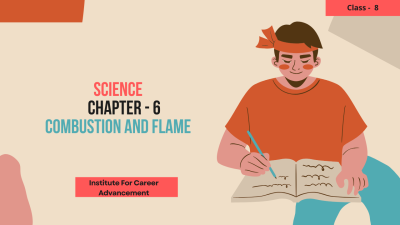Combustion And Flame - Class 8
Combustion is defined as the process of burning of a substance in the presence of air or oxygen with the liberation of heat and light. In other words, the chemical process in which a substance reacts with oxygen to produce heat is called combustion.The substance which undergoes combustion is called a combustible substance. It is also called a fuel. Sometimes light is also produced during combustion either as a flame or as a glow. Air is necessary for combustion. দহনকে তাপ এবং আলোর মুক্তির সাথে বায়ু বা অক্সিজেনের উপস্থিতিতে কোনও পদার্থ পোড়ানোর প্রক্রিয়া হিসাবে সংজ্ঞায়িত করা হয়। অন্য কথায়, যে রাসায়নিক প্রক্রিয়ায় কোনও পদার্থ অক্সিজেনের সাথে বিক্রিয়া করে তাপ উৎপন্ন করে তাকে দহন বলা হয়।যে পদার্থটি জ্বলে যায় তাকে দহনযোগ্য পদার্থ বলা হয়। একে জ্বালানিও বলা হয়। কখনও কখনও জ্বলন চলাকালীন আলো শিখা হিসাবে বা আলো হিসাবেও তৈরি হয়। জ্বালানোর জন্য বাতাসের প্রয়োজন হয়।
English
Last updated
Wed, 27-Nov-2024



















